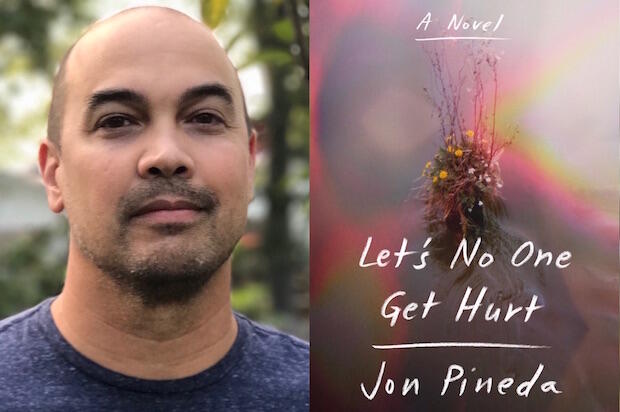
April 17, 2018
An interview with alumnus Jon Pineda, author of ‘Let’s No One Get Hurt’
Share this story
Virginia Commonwealth University alumnus Jon Pineda’s second novel, “Let’s No One Get Hurt,” tells the story of Pearl, a 15-year-old girl squatting in an abandoned boathouse in a swamp in the American South with her father, who is a disgraced college professor, and two other men. Pearl and the men scavenge what they can to survive, taking care of each other and forming an unconventional household. Then Pearl meets Mason, a popular boy from a nearby affluent neighborhood, and a turbulent relationship soon develops between the two teens that upends her life.
NPR critic Michael Schaub called Pineda’s coming-of-age tale a “lyrical and powerful novel” that “manages to be both honest and poetic at the same time.” Novelist Lauren Groff said, “Jon Pineda writes achingly beautifully, with such crystalline precision and intensity that I would follow him to any story he chooses to tell. Pearl is a character who is so real, so vulnerable and so earnest that she walked off the page and straight into my heart.”
Pineda received an M.F.A. from the Creative Writing Program in the Department of English, part of the College of Humanities and Sciences at VCU. Pineda’s other books include a novel, three poetry collections and a memoir called “Sleep in Me,” which was a 2010 Barnes and Noble Discover Great New Writers selection. Pineda teaches at the University of Mary Washington and as a core member of the M.F.A. faculty at Queens University of Charlotte.
Pineda answered questions from VCU News about his new novel.
Could you tell us about the inspiration for “Let’s No One Get Hurt”? What led to you writing about these characters?
Thinking a lot about economic inequality and the way privilege exerts itself.
You started writing this novel from the point of view of a mother and then changed your mind to tell the story from the perspective of her 15-year-old daughter, Pearl. Why did this shift occur and how did it change the shape of the story?
Pearl’s story began to emerge only after I was willing to alter my initial intentions for the narrative. I went from writing scenes in close third person (mostly from the mother’s point of view) to abandoning them for Pearl’s first-person voice. I suppose I had been looking for that level of intimacy all along. Once I made the switch, the story insisted on being cast in present tense, and from there, Pearl’s insistence became palpable for me.
Pearl has captured readers’ attention as a particularly compelling protagonist. Why has she struck such a chord with them?
Pearl is both fierce and naïve. She has a lot of courage, and yet, there are times when you want to protect her. The world bears down on her, and sometimes she relents, but mostly, she fights back. I also thought many readers might connect with the way Pearl wasn’t afraid to call bull---- on the privileged.
Tragedy plays a central role in this novel, as it did in your previous novel. What interests you in writing about characters who must contend with tragic events?
Tragedy, of course, can be obvious in its scope, immediately felt by all, and yet it can also be so subtle as to affect only one person. Ultimately, tragedy creates disruption, and disruption creates story.
Did you set out to write a story that addressed large issues such as class and race?
I suppose I did, but I wanted to be careful not to be didactic. I knew the situations of the characters would bring forward these issues of class and race naturally. If the issues were important enough, they would fight their way into the story and, more importantly, into the reader’s considerations.
The story is set in a swamp in the South. What appealed to you about that setting for this novel and what role does it play in the story?
I grew up playing in marshlands and creeks controlled by tides. I’ve always felt these landscapes were mystical, filled with surprises. The role of the landscape in the story is one of sustenance. It feeds Pearl and her makeshift family. But it also creates tension for them, which feeds the story.
What impact did the Creative Writing Program at VCU have on you?
It shaped my career as a writer. When I started the M.F.A. at VCU, it was a small program, and those who were there were very serious about craft. That left an indelible mark on me. I was studying poetry at the time, and when I was able to, I was taking short fiction classes. Unfortunately, I didn’t have the opportunity to participate in the novel writing seminar. Looking back, though, I’m grateful that initial path didn’t work out for me. It forced me to find a way on my own.
What are you working on now?
I’m writing another novel. I’m also learning how to make shoes with the hope that maybe I'll have a character who performs this kind of work.
Subscribe to VCU News
Subscribe to VCU News at newsletter.vcu.edu and receive a selection of stories, videos, photos, news clips and event listings in your inbox.













